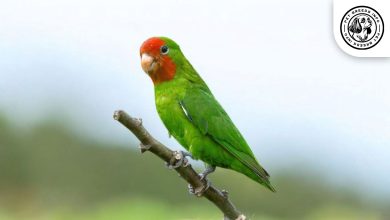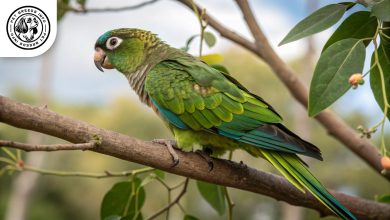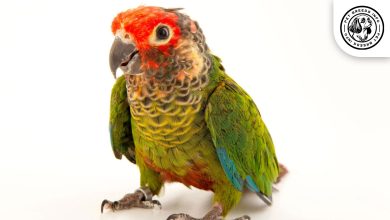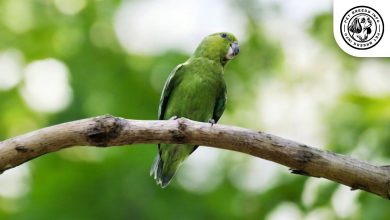Lutino Lovebird Breed: Personality, Lifespan, Food & Care
General Introduction of the Breed
The Lutino Lovebird is a popular and vibrant color mutation of the Peach-Faced Lovebird (Agapornis roseicollis). This striking bird is known for its bright yellow plumage combined with an orange-red face.
Originally from southwestern Africa, specifically Namibia and Angola, the Lutino Lovebird is a domesticated variant that was first bred through selective breeding programs targeting color mutations.
Table of Contents
| Common Name | Lutino Lovebird |
| Scientific Name | Agapornis roseicollis |
| Origin | Domesticated mutation; originally from Namibia and Angola |
| Size | Small; about 6 inches (15 cm), 45–55 grams |
| Lifespan | 10–15 years |
| Colors | Bright yellow with orange-red face, red eyes, ivory beak |
| Talking Ability | Limited – can mimic simple sounds with training |
| Noise Level | Moderate – chirpy and vocal when socializing |
| Social Behavior | Highly social, affectionate, forms strong bonds with humans and other birds |
Physical Characteristics
The Lutino Lovebird is a small and compact parrot, typically measuring around 6 inches (15 cm) in length and weighing between 45-55 grams.
It has a smooth and sleek coat of predominantly bright yellow feathers with a vivid orange-red face. The eyes are deep red, a unique feature distinctive to this mutation. The beak is a light ivory color, and its legs and feet are grayish.
The ears are not visible externally, as they are covered by feathers, and the tail is short and slightly rounded.

Personality and Temperament
Lutino Lovebirds are intelligent and can learn tricks and even mimic sounds with proper training. They are energetic and require plenty of mental and physical stimulation.
Highly social birds, they form strong bonds with their owners and can be very affectionate. They thrive on attention and interaction, making them perfect for people who can devote time to them.
They enjoy the company of humans and can live harmoniously with other lovebirds if introduced properly. Due to their playful and curious nature, they enjoy climbing, chewing, and playing with toys.
Care and Maintenance Requirements
Exercise is crucial for a Lutino Lovebird. They require daily out-of-cage time in a safe, supervised environment to fly and explore.
They are adaptable and can live in apartments as long as they have a spacious cage and ample out-of-cage interaction. Their cage should be at least 18x18x24 inches with horizontal bars for climbing.
Grooming includes occasional nail trimming and ensuring clean feathers. Regular cage cleaning is essential to maintain hygiene. A bath should be offered about twice a week to keep their feathers clean and healthy.
Read More: Maui Sunrise Macaw (Hybrid) Bird
Lutino Lovebirds are sensitive to extreme temperatures and should be kept in a room with a stable climate away from drafts or direct sunlight.
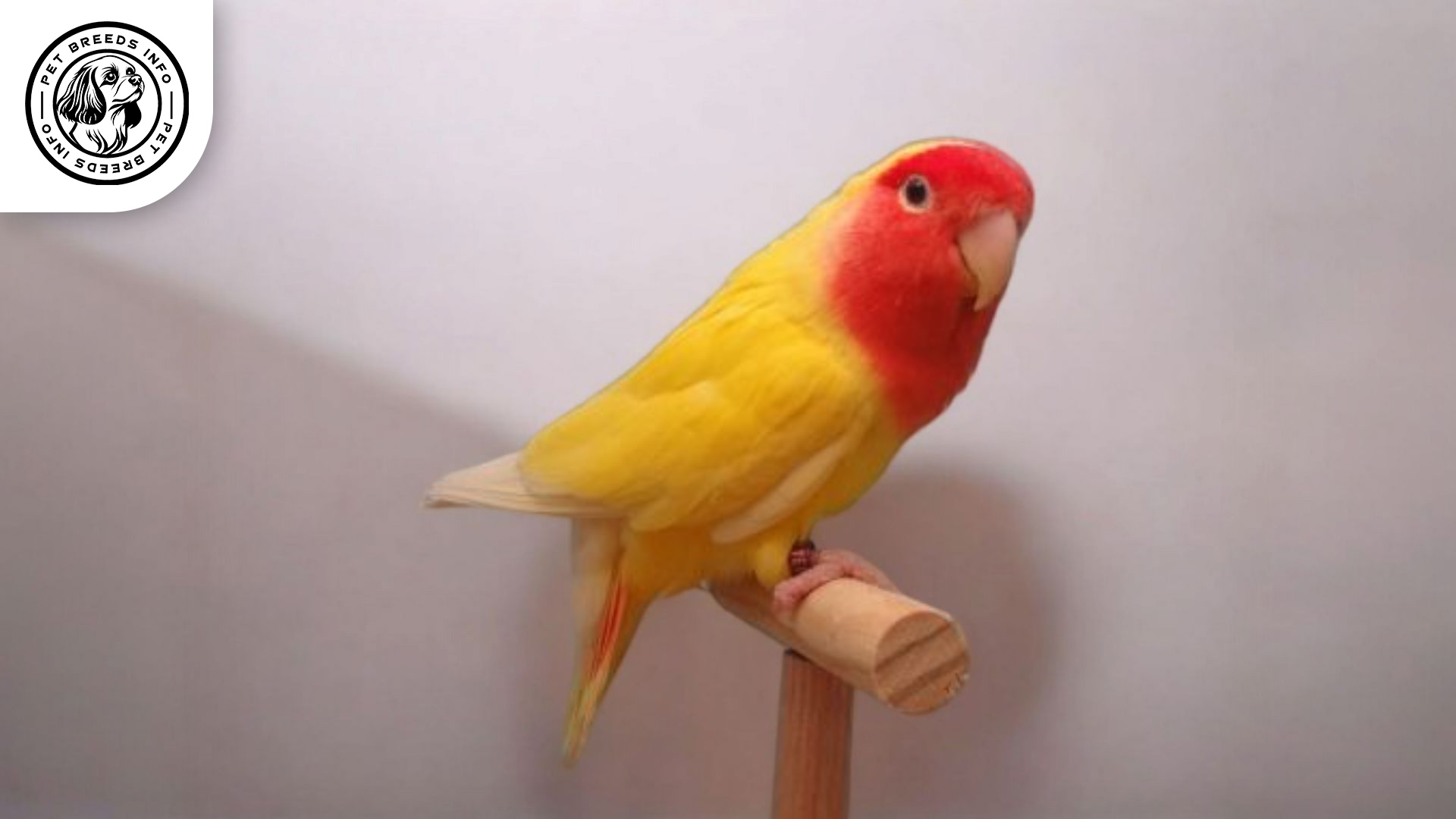
Diet and Nutrition
A balanced diet is essential for the health of the Lutino Lovebird. A high-quality seed mix or pellet-based diet supplemented with fresh fruits and vegetables is recommended.
Avoid giving them chocolate, avocado, caffeine, onions, and apple seeds, as these can be toxic. Excessive sunflower seeds should also be avoided due to their high fat content.
Portion sizes should be controlled, and they should be fed in two small meals daily to maintain their health and energy levels.
Health and Common Medical Issues
Common health concerns for Lutino Lovebirds include respiratory infections, feather plucking due to stress, and nutritional deficiencies. They can also be prone to psittacine beak and feather disease (PBFD).
Regular vet check-ups and a well-balanced diet can help prevent major health issues. The average lifespan of a Lutino Lovebird is around 10-15 years with proper care.
Routine vaccinations and regular deworming are advised, along with observation for any signs of illness such as lethargy, feather loss, or loss of appetite.
Read More: Duclair Duck
Training and Behavior Management
Lutino Lovebirds are intelligent and can be trained with patience and consistency. Positive reinforcement, such as treats and praise, is the best method for training.
Early training and socialization are recommended to ensure they develop good behavior. Teaching them step-up commands and hand taming is beneficial for bonding.
They can be taught tricks and even to associate simple sounds with actions. Avoid harsh punishments as it can lead to fear-based aggression.
Interaction with Other Animals and Humans
Lutino Lovebirds are friendly and affectionate toward their owners. They can develop deep bonds and even show jealousy if they feel neglected.
They can interact well with children if handled gently, but supervision is required to prevent accidental harm.
They can coexist with other birds, particularly other lovebirds, but early socialization is important to avoid aggression.
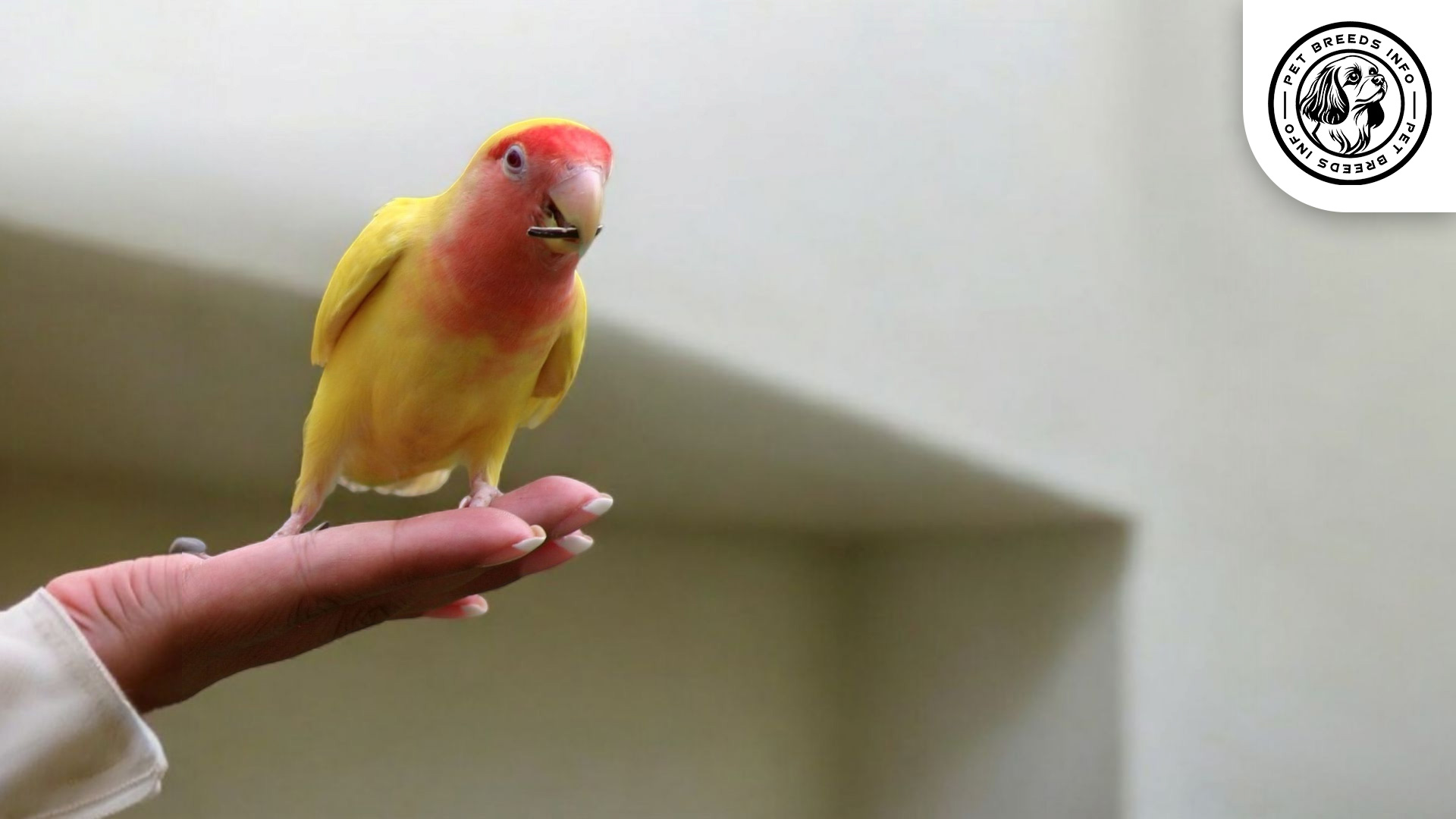
Price and Availability
Lutino Lovebirds are relatively affordable, with prices ranging from $50 to $150 depending on the breeder, location, and bird’s lineage.
When purchasing, it is advisable to source from reputable breeders or adoption centers to ensure the bird is healthy and well-socialized.
Avoid buying from unreliable sources where birds may be improperly bred or kept in poor conditions.
Conclusion and Final Thoughts
The Lutino Lovebird is an excellent pet choice for individuals or families who can dedicate time to socializing and caring for them.
They thrive in interactive environments where they receive attention and mental stimulation. They are best suited for owners who appreciate a playful and affectionate pet.
Read More: Mexican Parrotlet Bird
Before choosing a Lutino Lovebird, potential owners should consider the time and effort required in their care, training, and social needs. With proper care, these birds can become delightful companions for many years.
FAQ
What is a Lutino Lovebird?
It’s a vibrant yellow color mutation of the Peach-Faced Lovebird, known for its affectionate and playful behavior.
Where do Lutino Lovebirds come from?
They are a domesticated variant bred from birds native to Namibia and Angola.
Are Lutino Lovebirds good talkers?
They can mimic sounds and learn simple noises, but they are not known for extensive talking.
Do they get along with children?
Yes, if handled gently and supervised, they make great companions for kids.
Can I keep just one Lutino Lovebird?
Yes, if you provide ample interaction and attention, a single bird can thrive.

